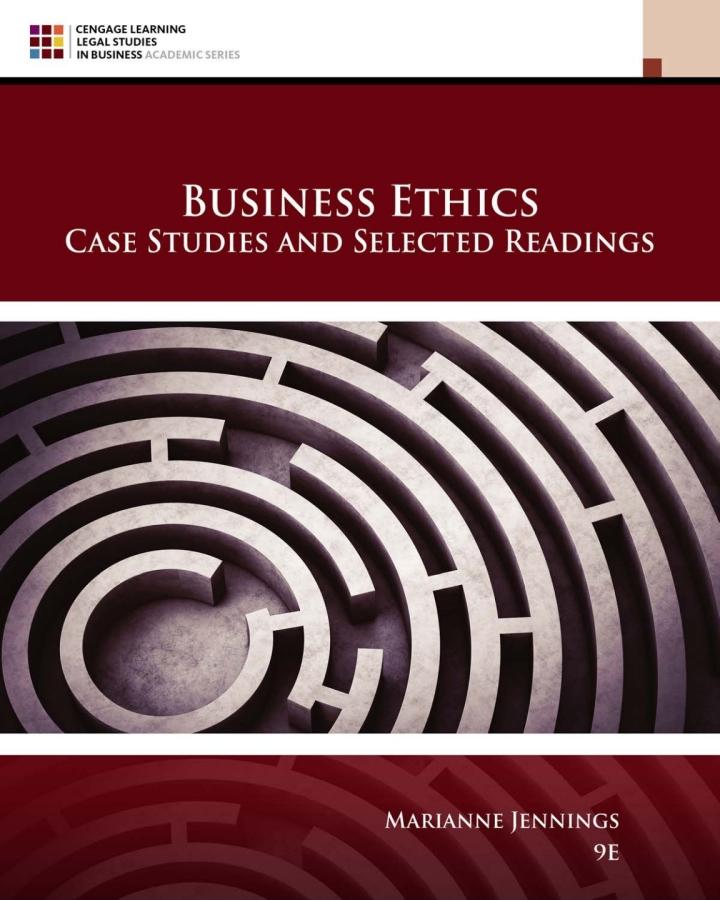The policy defined women capable of bearing children as all women except those whose inability to bear
Question:
The policy defined women capable of bearing children as "all women except those whose inability to bear children is medically documented." The policy defined unacceptable lead exposure as the OSHA standard of 30 micrograms per deciliter in the blood or 30 micrograms per cubic centimeter in the air.
In 1984, three Johnson Controls employees filed suit against the company on the grounds that the fetal-protection policy was a form of sex discrimination that violated Title VII of the Civil Rights Act. The three employees included Mary Craig, who had chosen to be sterilized to avoid losing a job that involved lead exposure; Elsie Nason, a 50 -year-old divorcee who experienced a wage decrease when she transferred out of a job in which she was exposed to lead; and Donald Penney, a man who was denied a leave of absence so that he could lower his lead level because he intended to become a father. The trial court certified a class action that included all past, present, and future Johnson Controls' employees who had been or would continue to be affected by the fetal protection policy Johnson Controls implemented in 1982.
At the trial, uncontroverted evidence showed that lead exposure affects the reproductive abilities of men and women and that the effects of exposure on adults are as great as those on a fetus, although the fetus appears to be more vulnerable to exposure. Johnson Controls maintained that its policy was a product of business necessity.
The employees argued in turn that the company allowed fertile men, but not fertile women, to choose whether they wished to risk their reproductive health for a particular job. Johnson Controls responded that it had based its policy not on any intent to discriminate, but rather on its concern for the health of unborn children. Johnson Controls also pointed out that inasmuch as more than 40 states recognize a parent's right to recover for a prenatal injury based on negligence or wrongful death, its policy was designed to prevent its liability for such fetal injury or death. The company maintained that simple compliance with Title VII would not shelter it from state tort liability for injury to a parent or child.
Johnson Controls also maintained that its policy represented a bona fide occupational qualification and that it was requiring medical certification of nonchildbearing status to avoid substantial liability for injuries.........
Discussion Questions
1. To what extent should a woman have the right to make decisions that will affect not only her health but also the health of her unborn child? To what extent should a woman's consent to or acknowledgment of danger mitigate an employer's liability? What if a child born with lead-induced birth defects sues? Should the mother's consent apply as a defense?
2. The U.S. Supreme Court eventually decided Johnson Controls' policy was discriminatory and a vioIation of Title VII. \({ }^{52}\) The court focused on the issue of men capable of reproduction was not covered by the policy. \({ }^{53}\) What steps would you take as director of human resources to create a "policy-free" work setting?
3. The fallout from the Johnson Controls decision has been that many women have been working in jobs that expose them to toxins. The U.S. Supreme Court did acknowledge in its holding that tort liability might result from its decision, but that such liability was often used as a guise or cover for gender discrimination. However, 14 years after the decision, women who were held to be entitled to the high-risk jobs are now suing their employers for the birth defects in their children. For example, IBM has several suits from employees and their children against it for defects allegedly tied to production-line toxins. \({ }^{54}\) The position of many of the employers is that even if evidence existed linking the toxins to birth defects, the women took the jobs with knowledge about the risk and agreed to that risk. How can employers, legislators, and public policy specialists reconcile antidiscrimination laws and these risks of exposure?
4. At what times, if any, should discrimination issues be subordinate to other issues, such as the risk of danger to unborn children?
Step by Step Answer:

Business Ethics Case Studies And Selected Readings
ISBN: 9780357453865
9th Edition
Authors: Marianne M. Jennings





